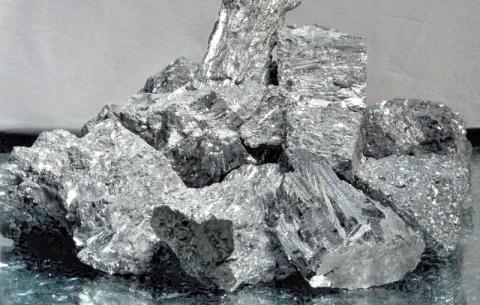Antimony in its pure or elemental form is non-toxic. However, some compounds of antimony are toxic and are considered carcinogens. For instance, antimony trioxide in powdered form can lead to irritation of nose and throat when inhaled and can cause cancer. Prolonged dermal exposure to antimony dust can lead to damage and infection of the skin.

Antimony (Sb) is a little-known heavy metal used in a wide variety of commercial and consumer products, including batteries, bullets, children’s toys, clothing, glass, paint, and plastic bottles. Antimony oxide is a fine, white powder that is used primarily in conjunction with a halogen to form a synergistic flame retardant system for plastics, rubber, fiberglass, textile. Antimony's source is available on Github, along with instructions for building it on Mac and Linux. Antimony is a long-running project under active development. It's at a beta level of stability: solid, but not recommended for mission-critical use. If you're interested in contributing, there's a pretty low bar for entry.
Antimony has an atomic number of 51 and is represented by the symbol Sb, derived from the Latin Stibium, the name given to antimony sulfide in the Classical period. Antimony is part of the class of elements known as metalloids, which have properties roughly between those of the metals and the non-metals of the periodic table. Antimony is also what is known as a semimetal, which refers to the way in which it conducts energy .
Antimony in its stable form is a blue-white metallic element, with an atomic mass of 121.76g/mol. It melts at 1167°F (630°C) and makes a rather effective semiconductor. Although it looks metallic, antimony does not have the same chemical responses as a true metal. Antimony is also often added to lead to make the lead stronger.
Antimony is used in many different contexts in industry, including some medicines, lead-free solders, bullets, batteries, plumbing, and matches. It has been used in a naturally occurring form for thousands of years, primarily as a medicine, as small amounts can kill certain parasites without compromising the health of the recipient. Antimony in a compound form also has impressive flame-retarding properties, and as a result is used to treat such things as seat covers, toys, and children’s clothing.
Featured Product Specifications
| Product Name | Belmont Product Code | Form | Product Description |
|---|---|---|---|
| 99.85% High Grade Antimony | 10000D | 8 Mesh and Down Shot | 99.85% High Grade Antimony Shot; Used primarily for Hardening of Alloys |
| 99.85% High Grade Antimony | 10000A | Slabs | 99.85% High Grade Antimony Slabs; Used primarily for Hardening of Alloys |
| 99.85% High Grade Antimony | 10000E | Cast Rods | 99.85% High Grade Antimony Cast Rods |
| 99.5% Antimony | 10002A | 100 Mesh and Down Powder | 99.5% Antimony Powder |

| 99.85% High Grade Antimony | |
|---|---|
| Belmont Product Code | 10000D |
| Form | 8 Mesh and Down Shot |
| Product Description | 99.85% High Grade Antimony Shot; Used primarily for Hardening of Alloys |
Antimony Tribromide
| 99.85% High Grade Antimony | |
|---|---|
| Belmont Product Code | 10000A |
| Form | Slabs |
| Product Description | 99.85% High Grade Antimony Slabs; Used primarily for Hardening of Alloys |
Antimony Poisoning
| 99.85% High Grade Antimony | |
|---|---|
| Belmont Product Code | 10000E |
| Form | Cast Rods |
| Product Description | 99.85% High Grade Antimony Cast Rods |
Antimony Category
| 99.5% Antimony | |
|---|---|
| Belmont Product Code | 10002A |
| Form | 100 Mesh and Down Powder |
| Product Description | 99.5% Antimony Powder |
